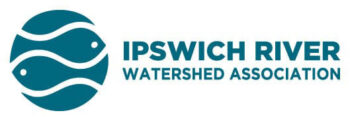Guest blog by Paddle-a-thon Committee member, Mark Hodgson
Years ago a great blue heron stood incongruous and motionless on a mud bar in a pond, undistracted by a strong breeze, and looked down into the water. My black lab and I were hiking around that pond, on the opposite side. The lab, watching, seemed as transfixed as the bird, probably not believing its size. Then the heron jabbed its head into the water and came up with a fish skewered on its beak, so quickly it didn’t seem real. The heron dropped the fish while the unfortunate lunch-to-be was still flopping wildly, and stabbed it repeatedly on the ground until the wriggling ceased. The bird swallowed the fish. We watched as the plump form slid down within the heron’s neck, then disappeared. My lab looked at the bird, then me, and back at the bird, and never made a sound. We were impressed.
Perhaps you, too, have witnessed moments like that. This gangly yet exquisite creature can be found throughout our watershed. Though fairly shy, it can be observed by any still and quiet human with patience similar to the bird’s, and some luck to match. Though it spends its fledgling days in a nuclear family, once it is an adult and is well-educated in its species’ survival skills it sets out on its own, goes where it likes near water, and does its own thing. That’s in keeping with this week’s theme: the Do Your Own Thing event in the Paddle-a-thon!
The great blue heron knows how to survive. Birds similar to it have been flying for 100 million years—that’s about 98 million years before our own ancestors took up stone tools. “It’s easy to catch the reptilian in birds. . . . in the great blue heron—the slow heavy wing beat, the snaky finesse of its neck, the hoarse squawks, are all a throwback to dinosaur lagoons.”*
That stabbing action? It’s a good example of what evolution can refine. If you’ve ever seen a game of Jai-Alai, think of the bird’s neck as a natural example of the cesta, that scoop-like device attached to the arm from which the Jai-Alai player slings the ball: the heron’s neck throws the head with its knife-sharp beak at the target, just like the cesta throws a ball, or like an atl-atl (spear-thrower) slings a spear. Mechanical advantage made visible. The heron’s S-shaped neck is very strange, the vertebrae curving around in front of the esophagus and trachea to protect these and other neck organs from impact in that fast strike. One distinction of herons is how they lay their head back on their body while in flight, folding up that neck rather than extending it like ducks or geese.
You won’t see them hunting in groups—again, they do their own thing, and that thing can be wildly varied. Herons are “opportunistic feeders” that will eat “shrimp, crabs, small mammals, amphibians, small birds, rodents, and insects.”
They prey in many different styles, too. Although what my dog and I saw that day is a common way for them to fish, “ . . . some waggle their feet or open and close their wings suddenly—probably in an attempt to startle prey into the open. Others draw one wing up and tuck their heads underneath. Scientists believe they may do this to shield the glare from the surface so that they can see underwater better. . . . All herons are adept at stepping noiselessly through water. Some walk quickly but that may be simply to get from one feeding area to another. . . . Although most herons can hunt from the air, they do rarely . . . Most take the opportunity of snapping insects out of the air when they get close enough. Flying slowly over water, herons can snatch food from the surface while hovering or by dipping their bills into the water. The biggest herons, including the great blue heron, may swim after food.”** It’s easy to see how they’ve survived for so long—they’re adaptable.
It’s hard to adapt to birdshot, however. Hence, after its first 99 million years, the real threat for the heron family of Ardeidae, to which the great blue heron belongs, arose in the late 19th and early 20th centuries in the form of commercial hunters, looking to profit from the women’s hat industry. So many of the heron’s cousins, the White Egret and Snowy Egret, were hunted for their plumage that public outcry gave birth to the financial and political force of the Audubon Society, and hunting egrets was banned.***
Aesthetics wasn’t the only problem. “Great Blue Heron populations suffered in the Northeast because unsportsmanlike hunters could not resist using the big birds for target practice.”**** Today, though, very few “are shot—as a control measure at fish farms or when a colony [during breeding season] achieves ‘pest’ status.”*****
Another Paddle-a-thon theme: we should defend the watershed and also celebrate it. The great blue heron enjoys a nearly predator-free life along the Ipswich River Watershed. It’s a giant beauty we don’t get to see every day. Let’s celebrate its presence in our neighborhood!
*Jennifer Ackerman, The Genius of Birds,New York: Penguin Press, 2016, p. 45
** Chandler, David; Niemann, Derek; and Whitehead, Tony, World of Animals, Vol. 14
***Sibley, David Allen, Elphick, Chris, Dunning, John B. Jr., Eds. The Sibley Guide to Bird Life & Behavior, New York: Alfred A. Knopf, 2001, pp. 170–176.
****Williams, Winston, Waterbirds of the Northeast, Tampa, FL: World Publications, 1989, pp. 14-16
*****Sibley, David Allen, Elphick, Chris, Dunning, John B. Jr., Eds. p. 176
[blog_subscription_form title=”Subscribe For More River Updates”]
